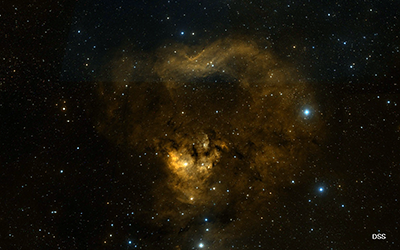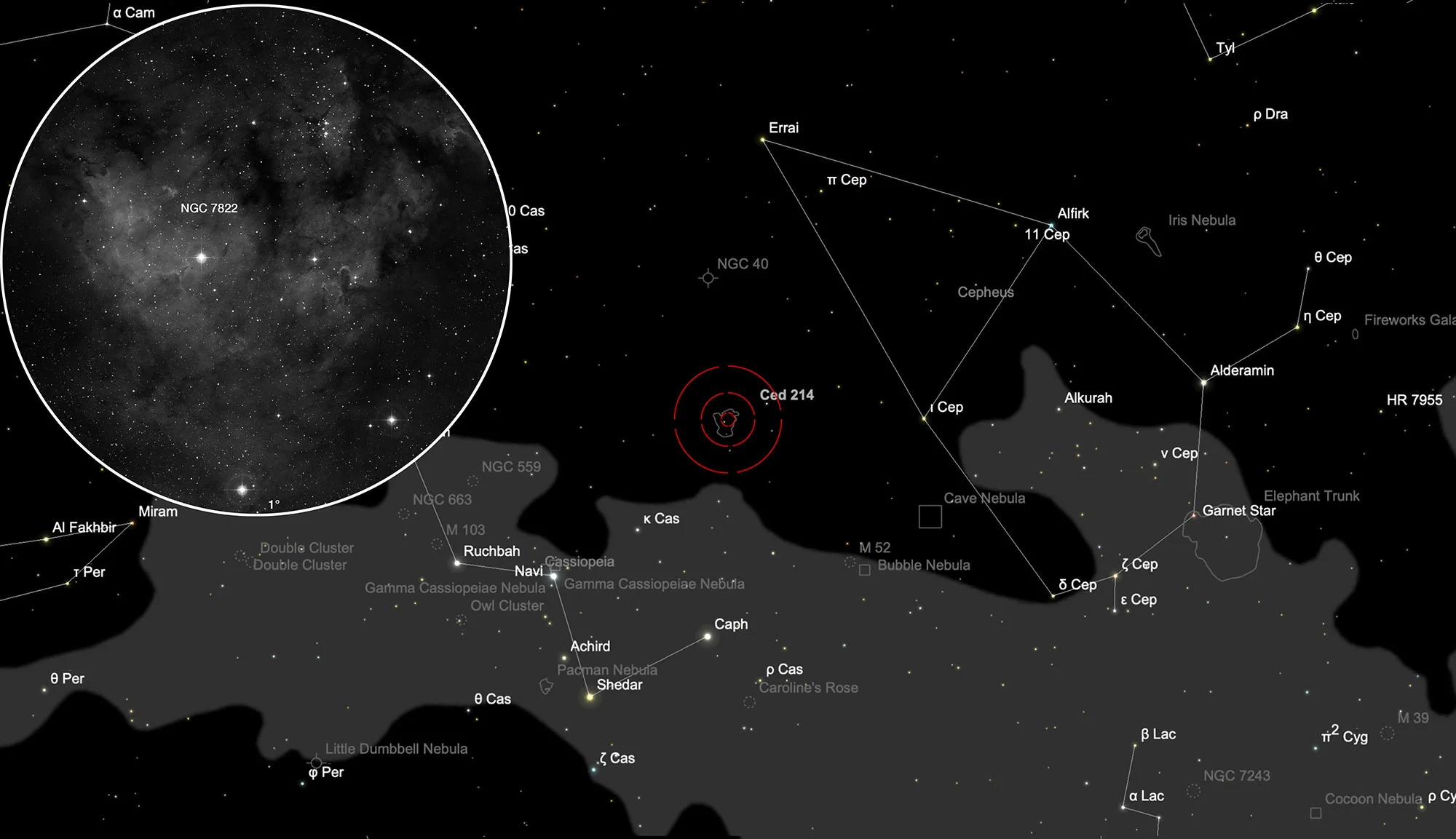Galactic Nebula NGC 7822 (Cederblad 214)



History
This nebula was discovered by John Herschel on 16 November 1829 using his 18.3 inch reflector. He cataloged it as h 2302 (GC 5051) and described it with the words: «The central part of what I am positive is an enormously large but extremely faint nebula of a round figure, though I cannot trace its limits. The night exquisite. I swept often across it to be sure, but always recurred to the same place. No doubt but can never be seen but in the best state of the air and sky. Diameter 10' ±.» [277, 466] The discovery was later added as NGC 7822 by Dreyer. [313]
In 1946 the Swedish astronomer Sven Cederblad published his study of bright diffuse galactic nebulae. This nebula is there listed there as Cederblad 214. He noted: «The nebula surrounding the two stars +66 1676 = HD 224992, and +66 1679 = HD 225216 = Boss 39. R. Erroneously identified as NGC 7822 by Roberts in (624). (630 Pl 20).» [130]
In the late 1950-ies the American astronomer Stewart Sharpless studied the 48 inch Schmidt telescope photographic plates of the «Palomar Observatory Sky Survey» and identified NGC 7822 with the nebula Sh 2-170. In 1959 he published his catalogue of 313 H-II regions. [310]
Physical Properties

The nebula is an approximately 3° large, complex emission nebula full of young, hot stars, which heat up the gas with their strong ultraviolet radiation, ionize it and thus cause it to glow. A few wisps of dark dust partially obscure the glowing nebula. At an estimated distance of around 3000 light-years, this gas nebula measures around 150 light-years in diameter. The loose star cluster at its centre contains about 40 O and B stars, of which spectral type O7 is the youngest and hottest. The estimated age is about five to six million years. [145, 196]
Fig. 2 shows a section of the southern part of the nebula, also known as Cederblad 214 or LBN 581. The arcuate, fainter northern part is also designated LBN 589. The entire nebula complex is also known as Sharpless 171 (Sh2-171). Some atlases refer to the entire nebula complex as NGC 7822, others only to the northern part. In Fig. 3 one sees the whole nebula alternately in the visible light and in the infrared. The infrared light penetrates the dark clouds and some new nebula structures and stars become visible.
| Designation | NGC 7822 |
| Type | EN |
| Right Ascension (J2000.0) | 00h 03m 36.0s |
| Declination (J2000.0) | +67° 09' 00" |
| Diameter | 100 arcmin |
| Metric Distance | 0.900 kpc |
| Dreyer Description | ! eeF, eeL |
| Identification, Remarks | h 2302; GC 5051; LBN 583; CED 214A; in Sh2-171 |
Finder Chart
NGC 7822 is located in the eastern part of the constellation Cepheus between the «gable» of «the crooked house of King Cepheus» and the «W» the Cassiopeia. On 24 September it is in opposition to the Sun and crosses the meridian at local midnight. In Central Europe, the nebula is circumpolar and is highest in the night sky from June to February.
